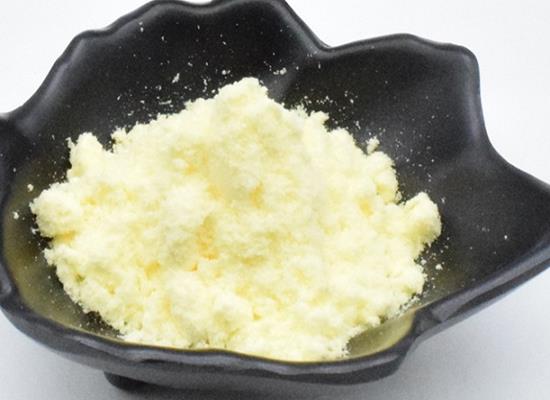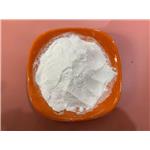Sodium (R)-Alpha-Lipoate: Pharmacokinetics and Therapeutic Effects
May 23,2024
General Description
Sodium (R)-alpha-lipoate, derived from R-lipoic acid, was studied for its pharmacokinetics and therapeutic effects. Administered as Sodium (R)-alpha-lipoate, it showed improved solubility and bioavailability with higher plasma concentrations compared to rac-LA. Multiple doses resulted in significant plasma levels, indicating efficient absorption. In therapeutic studies for gastric signet ring cell carcinoma, a combination of Sodium (R)-alpha-lipoate and ascorbate demonstrated enhanced anti-cancer effects when administered sequentially. This suggests a potential alternative medicine approach for treating gastric signet ring cell carcinoma. Further research is warranted to optimize treatment regimens and understand the mechanisms underlying these effects.

Figure 1. Sodium (R)-alpha-lipoate
Pharmacokinetics
Sodium (R)-alpha-lipoate is a compound that has been widely used in clinical settings and as a nutritional supplement marketed for its antioxidant properties. This compound is derived from racemic mixture, RS-(+/-)-alpha-lipoic acid (rac-LA), which consists of two isomers: R-lipoic acid (RLA) and S-lipoic acid (SLA). Recent studies have shown the superiority of RLA over rac-LA in various models and the potential benefits of RLA in aging and age-related diseases. In a study, the pharmacokinetics (PK) of Sodium (R)-alpha-lipoate was investigated in healthy human subjects. To enhance its solubility, the sodium salt form of RLA, known as NaRLA, was utilized. Previous research had demonstrated that NaRLA exhibited improved stability and bioavailability compared to RLA due to its enhanced solubility in water. The study involved oral administration of 600 mg of NaRLA to 12 healthy adult subjects. Plasma samples were collected, and the concentration of RLA in plasma was determined using high-performance liquid chromatography. The results showed that Sodium (R)-alpha-lipoate had higher maximum plasma concentration (Cmax) and area under the plasma concentration-time curve (AUC) values compared to RLA or rac-LA. Sodium (R)-alpha-lipoate also exhibited faster absorption, as indicated by decreased time to maximum concentration (Tmax) and half-life (T1/2) values. Furthermore, the study explored the cumulative effect of multiple doses of Sodium (R)-alpha-lipoate on a single subject. It was found that administering three consecutive 600 mg doses of NaRLA at 15-minute intervals resulted in plasma concentrations similar to those achieved through intravenous infusions in previous studies. Importantly, the study reported negligible unbound RLA even at the highest achievable plasma concentrations. This suggests that Sodium (R)-alpha-lipoate is well-absorbed and efficiently utilized within the body. In conclusion, the pharmacokinetic profile of Sodium (R)-alpha-lipoate, administered as NaRLA, demonstrates improved solubility, enhanced bioavailability, and favorable absorption characteristics. These findings support the potential use of NaRLA as a therapeutic agent in various aging-related conditions and warrant further investigation into its clinical applications. 1
Therapeutic Effects
Sodium (R)-alpha-lipoate has been investigated for its therapeutic effects in various medical conditions, including gastric signet ring cell carcinoma. This aggressive form of gastric adenocarcinoma has a poor prognosis, especially when diagnosed at an advanced stage. However, alternative medicine approaches using natural supplements have shown promise in inhibiting cancer growth with minimal side effects. In a recent study, the therapeutic effects of ascorbate (AA) and Sodium (R)-alpha-lipoate were evaluated individually and in combination in different cell lines, including SRCC cells. The results demonstrated that all four gastric cell lines, including patient-derived cell lines, were sensitive to ascorbate treatment at a concentration of approximately 10 mM. Additionally, a 16-hour incubation period was found to be optimal for in vitro studies. Interestingly, a combination of AA and Sodium (R)-alpha-lipoate (AA&LA) did not significantly inhibit cell proliferation when administered simultaneously. However, when Sodium (R)-alpha-lipoate treatment was given prior to AA therapy (LA + AA), there was an increased inhibition of cell growth. This suggests that the order in which the drugs are administered may influence their anti-cancer efficacy. Furthermore, the therapeutic effects of AA were confirmed in 3D-cultured SRCC organoids, providing evidence of its potential in treating gastric-origin SRCC. In conclusion, sodium (R)-alpha-lipoate, particularly in combination with ascorbate, shows promise as an alternative medicine approach for treating gastric signet ring cell carcinoma. Further research is needed to fully understand the mechanisms and optimize the treatment regimen for maximum therapeutic benefits. 2
Reference
1. Carlson DA, Smith AR, Fischer SJ, Young KL, Packer L. The plasma pharmacokinetics of R-(+)-lipoic acid administered as sodium R-(+)-lipoate to healthy human subjects. Altern Med Rev. 2007; 12(4): 343-351.
2. Chen W, Xu L, Chang E, Gowrishankar G, Ferrara KW, Gambhir SS. Alternative medicine: therapeutic effects on gastric original signet ring carcinoma via ascorbate and combination with sodium alpha lipoate. BMC Complement Med Ther. 2022; 22(1): 58.
- Related articles
- Related Qustion
Diethyl malonate, a colorless, fragrant ester of malonic acid, is increasingly significant in the realm of organic chemistry.....
May 23,2024APISelenium sulfide remains a critical component in both scientific and industrial contexts due to its effective properties and versatile applications.....
May 23,2024APISodium (R)-alpha-lipoate
176110-81-9You may like
Sodium (R)-alpha-lipoate manufacturers
- Sodium (R)-alpha-lipoate
-

- $3.00 / 1kg
- 2024-04-16
- CAS:176110-81-9
- Min. Order: 1kg
- Purity: 99.9%
- Supply Ability: 10 tons
- Sodium (R)-alpha-lipoate
-

- $35.00/ kg
- 2024-03-15
- CAS:176110-81-9
- Min. Order: 1kg
- Purity: 99.8%
- Supply Ability: 200tons/year
- R(+)-Alpha Lipoic Acid SodiuM
-

- $500.00 / 1KG
- 2024-02-22
- CAS:176110-81-9
- Min. Order: 1KG
- Purity: 99%
- Supply Ability: 20 tons




